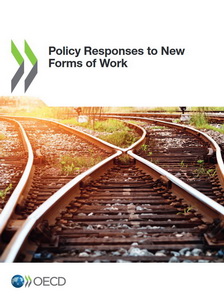 With co-funding of the European Union, the OECD developed a survey to summarise the responses of 44 countries, including all EU Member States into a report on policies taken in response to growing diversity in forms of employment.
With co-funding of the European Union, the OECD developed a survey to summarise the responses of 44 countries, including all EU Member States into a report on policies taken in response to growing diversity in forms of employment.
The Policy responses to new forms of work report gives a snapshot of policy actions among a widespread sample of countries in response to the changing world of work.
The process started with the creation of a survey directed to Ministries of labour of 44 EU, OECD and G20 Member States, which is included in the appendix of the report.
After collecting the responses, the OECD summarised the countries’ replies into a report discussing the most common and novel policy responses.
New forms of work were mostly understood as diverging from ‘standard employment contracts’ and predominated by platform work and self-employment.
Related to that, policies incentivising a proper classification of workers are widely discussed in the report, as well as ensuring good working conditions and social protection for those workers having a non-standard employment contract.
Other issues discussed are occupational health and safety, strengthening social dialogue, investing in skills and ensuring access in employment services.
Finally, based on these responses, the OECD provides a set of policy directions related to these new forms of work. They advise to
- ensure getting the classification of workers right to start with,
- while simultaneously reducing incentives for the misclassification of workers,
- complemented with better working conditions, social protection coverage and more opportunities for collective bargaining and professional development for those workers in non-standard contracts.
Lastly, the OECD recommends to create a better evidence base by collecting data and stresses the importance of collaboration between stakeholders in order to adopt a comprehensive approach to tackle the negative aspects around new forms of work.
Source: ec.europa.eu
 Government of the Republic of Serbia
Government of the Republic of Serbia















 pdf [271 KB]
pdf [271 KB]
Leave a Comment